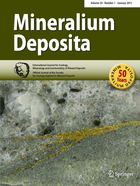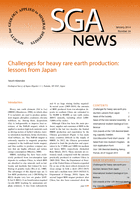Main focus was on the origin of ore deposits in both the Czech and German parts of the Krusne hory/Erzgebirge Mts. The main attraction of the field trip was an underground visit in the historical mines of Ehrenfriedersdorf and Pöhla and at the Zlatý Kopec near Boží Dar (Gotesgab). The common feature of all localities is a widespread cassiterite mineralization related to the hydrothermal fluid flow from late Variscan biotite to topaz granites (327–312 Ma). The tin deposits are located in the paleoroof of the Krusne hory/Erzgebirge batholith formed by Neoproterozoic and Early Paleozoic supracrustal sequences: phyllites, micaschists, paragneisses, amphibolites, and marbles that were altered and host stratiform or disseminated mineralization. Altered rocks are also intersected by numerous ore-bearing veins. The highest abundances of economic minerals are concentrated in skarns that formed by replacement of dolomites or surrounding metasediments and metavolcanics. Therefore skarns were target of historical mining as well as post-war exploration and became the principal target of our field trip.
Origin of ore deposits in the Erzgebirge (Krusne hory) Mts., Central Europe (November 4-5, 2012)
Bookmark the permalink.







